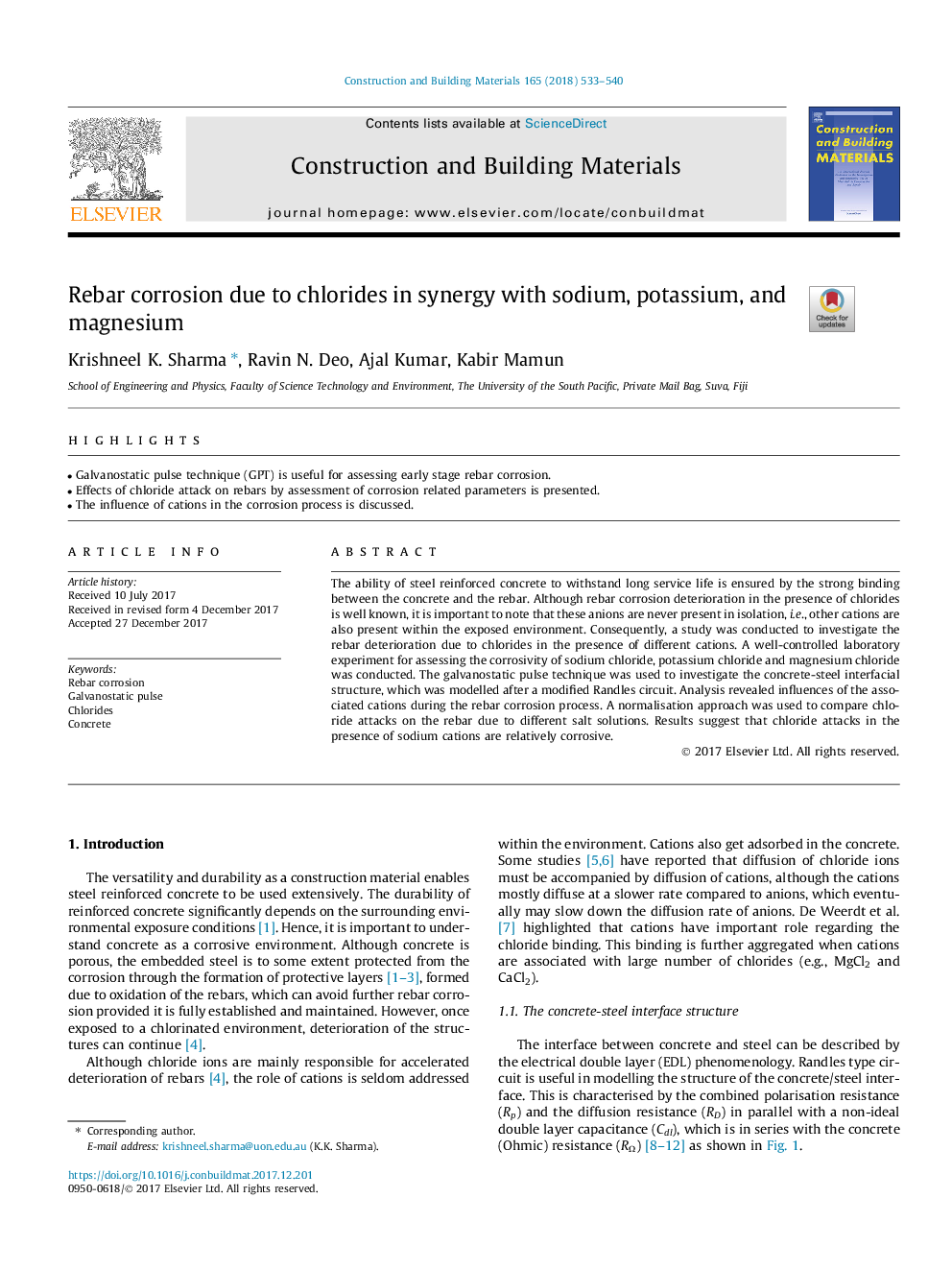| Article ID | Journal | Published Year | Pages | File Type |
|---|---|---|---|---|
| 6715675 | Construction and Building Materials | 2018 | 8 Pages |
Abstract
The ability of steel reinforced concrete to withstand long service life is ensured by the strong binding between the concrete and the rebar. Although rebar corrosion deterioration in the presence of chlorides is well known, it is important to note that these anions are never present in isolation, i.e., other cations are also present within the exposed environment. Consequently, a study was conducted to investigate the rebar deterioration due to chlorides in the presence of different cations. A well-controlled laboratory experiment for assessing the corrosivity of sodium chloride, potassium chloride and magnesium chloride was conducted. The galvanostatic pulse technique was used to investigate the concrete-steel interfacial structure, which was modelled after a modified Randles circuit. Analysis revealed influences of the associated cations during the rebar corrosion process. A normalisation approach was used to compare chloride attacks on the rebar due to different salt solutions. Results suggest that chloride attacks in the presence of sodium cations are relatively corrosive.
Related Topics
Physical Sciences and Engineering
Engineering
Civil and Structural Engineering
Authors
Krishneel K. Sharma, Ravin N. Deo, Ajal Kumar, Kabir Mamun,
